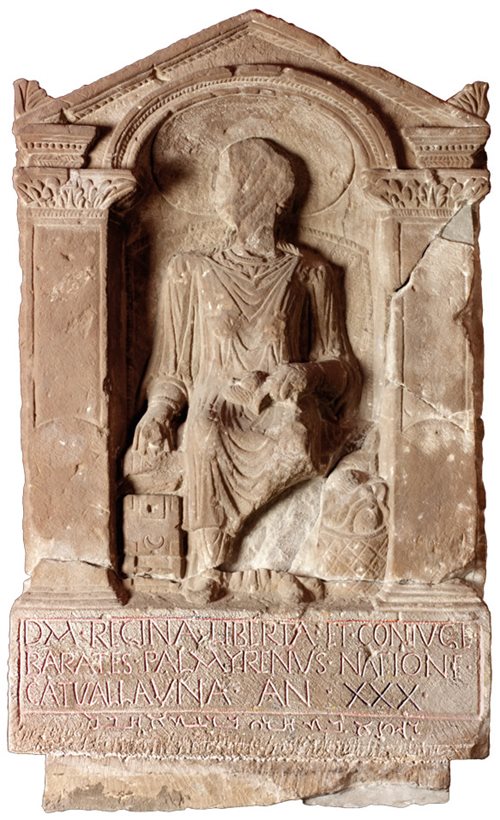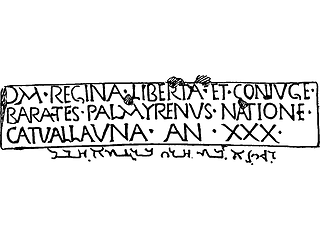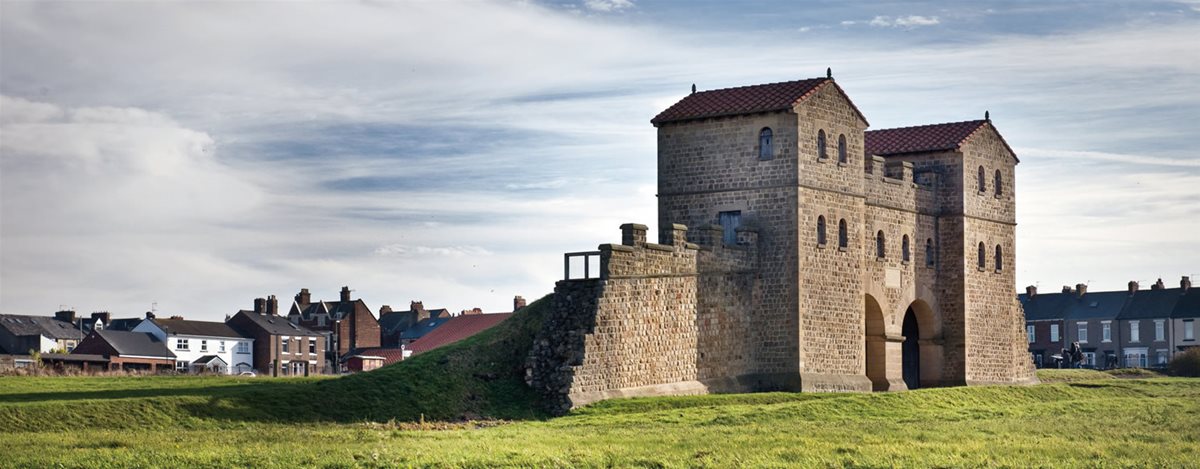 (All illustrations from AramcoWorld)
(All illustrations from AramcoWorld) The first part of the inscription is in Latin and reads:
To the spirits of the departed [and to] Regina, his freedwoman and wife, a Catuvellaunian by tribe, aged 30, Barates of Palmyra [set this up].

Below is a line in Palmyrene reading:
Regina, the freedwoman of Barate, alas.The tombstone, found in 1878, near the Fort of South Shields, along the Tyne River, at the eastern end of Hadrian's Wall in England, is a reminder of the scale of the Roman Empire, the opportunity for movement it created for its populace (particularly the military and merchants), and the mixing of cultures it triggered. For a look at the other end of the Empire read The Farthest Outpost.
The tombstone dates from the mid or late second century AD. At Emperor Hadrian's direction the great wall was built in the 120s, and to help garrison it, a unit of 500 archers from the Syrian city of Hama, were imported to northern Britain. Barates was also from Syria, specifically Palmyra, the prosperous desert city located on the caravan routes from Syria to the foreign kingdom of Parthia. He appears to have been a merchant who had established residence near the wall, providing goods and services to the Roman soldiers and the settlements that grew up near its forts.
The deceased Regina was originally the slave of Barates who he subsequently freed and married. She was a Britain, from a tribe located in the midlands. The expense her husband went to in erecting the monument indicates a close attachment between the two.
Barates traveled 3,000 miles from the open, hot and dry desert lands of Palymra to the cool, dark, green and damp lands of farthest Britain, where he married a native and decided to settle. The internal migrations of the Roman Empire had their only comparable parallel in the classical age with the Greeks who migrated from their home country to settle in Afghanistan in the wake of Alexander the Great's conquests.
In 1911 another tombstone, also dated to the second century, was found near the wall, about 30 miles west of South Shields. It is for Barates. Since Barates was a common Syrian name, it is not certain whether it is Regina's husband, but it describes the deceased as a vendor making the link plausible.
The Hama archers and Barates were not the end to the Eastern presence in Roman Britain. At the time of Barates the South Shield fort was called Lugudunum but it is now known as Arbeia. Towards the end of the third century, Rome transferred several hundred boatmen from the upper reaches of the Tigris River, in what is now Iraq, to work on the Tyne. It was at this time the name of the fort became Arbeia and it is theorized the name derives from the Aramaic arbaya or bet arbeia, meaning "arab house".
(The reconstructed gate of South Shields which today houses the museum where Regina's tombstone can be seen)

No comments:
Post a Comment